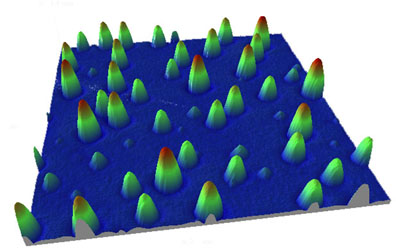
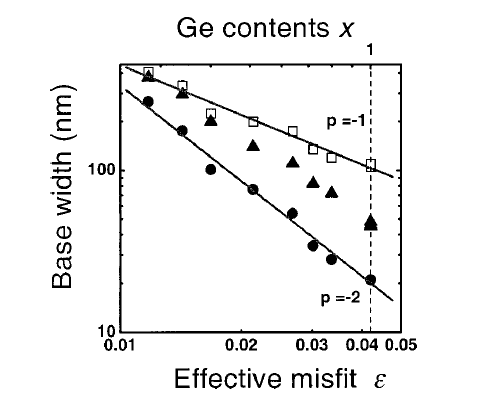
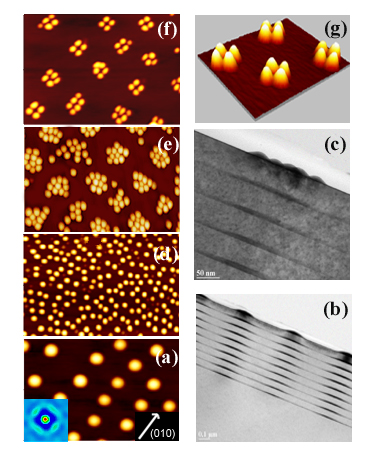
First
we will show that, by capping randomly-positioned, self-assembled Ge islands
with Si at
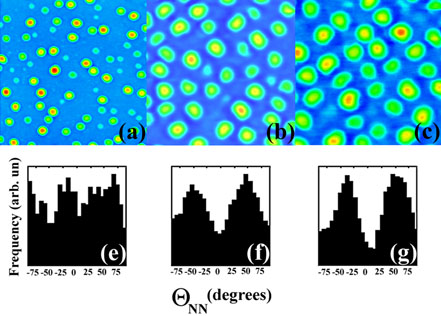
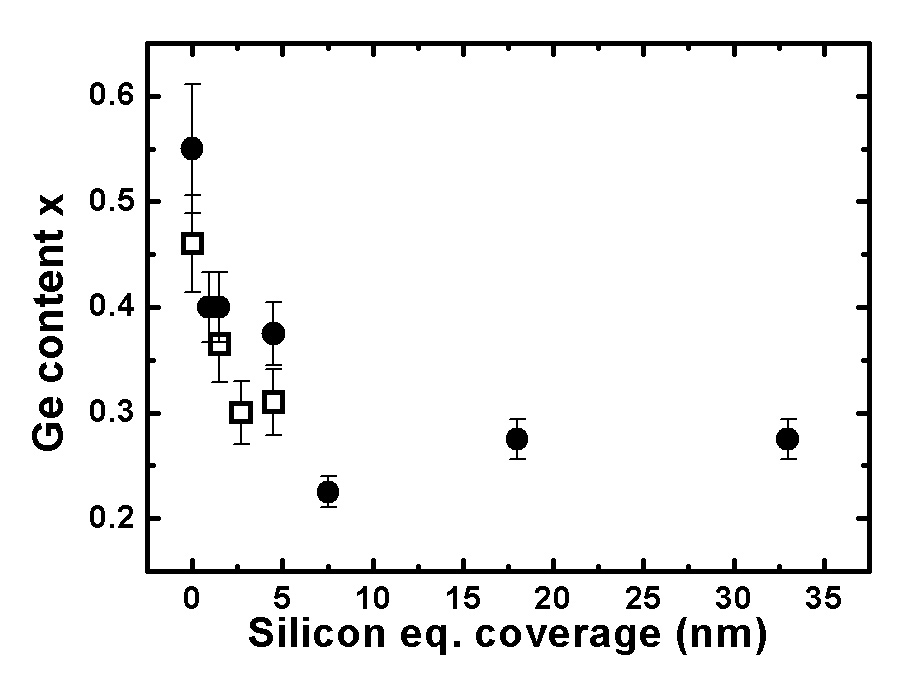
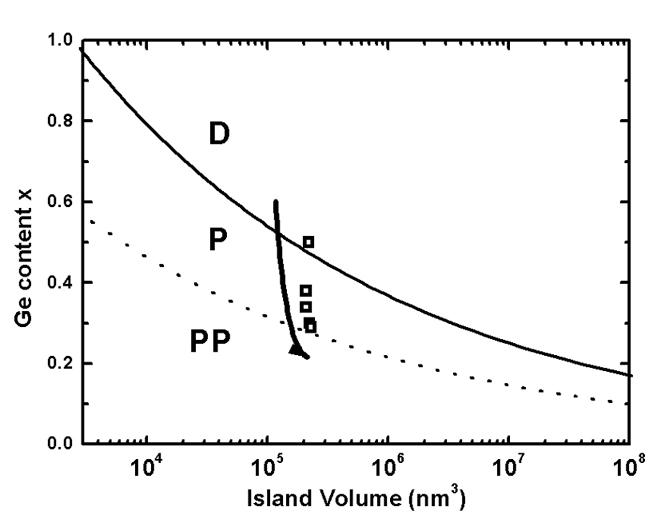
| PHYSICS OF SELF-ASSEMBLED Ge/Si ISLANDS (Ge quantum dots) | ||
| The interest in the study of self-assembled semiconductor dots stems from the possibility of using these materials as active layers in the fabrication of new mesoscopic devices. To this purpose it is necessary to achieve a good control of the size and the shape of the islands, in particular it is important to reduce the island dimensions in order to increase the confinement and the charging effects in these systems. We have investigated the influence of the growth parameter (growth temperature, growth rate, and amount of the deposited material) on the size, size distribution and areal density of self-assembled Ge islands grown by Ultra-High-Vacuum Chemical Vapour Deposition technique on Si(100) substrates. We have obtained a good control of the island density on a wide range of deposition temperatures by tuning the growth rate by means of the flow and the pressure of the reacting gases. Furthermore, we found that the deposition temperature play an important role in defining the typical sizes of the islands. We explained this effect as due to a temperature-promoted Si-Ge intermixing that reduces the effective epilayer-substrate lattice mismatch and, consequently, the existing strain field. For the first time, we evidenced the existence of scaling laws linking the island sizes to their actual composition and strain. |
|
|
|
|
||
|
|
The
self-assembly offers the possibility of obtaining nanometer-sized islands
without the use of expensive nano-lithography processes. The random nature
of the island formation leads to a non-uniformity and a
non-predictability in their spatial distribution. On the other hand, in
order to use these structures into integrated devices, an accurate control
over their spatial positioning is required. To solve this problem, we have
proposed a bottom-up approach to the ordering of self-assembled island
exploiting the strain modulation
at a silicon surface arising from a self-ordered stack of buried Ge islands.
We have demonstrated that islands can be placed in arrays having a
short- as well as a long-range order. The effect of the buried island strain
field intensity and of the island-island interaction, have been taken in to
account in the description of the island growth dynamics on such "strain
templates".
|
|
|
First
we will show that, by capping randomly-positioned, self-assembled Ge islands
with Si at
|
|
|

|

|
|